This Incredible Four-Second Workout Actually Works, Says New Study
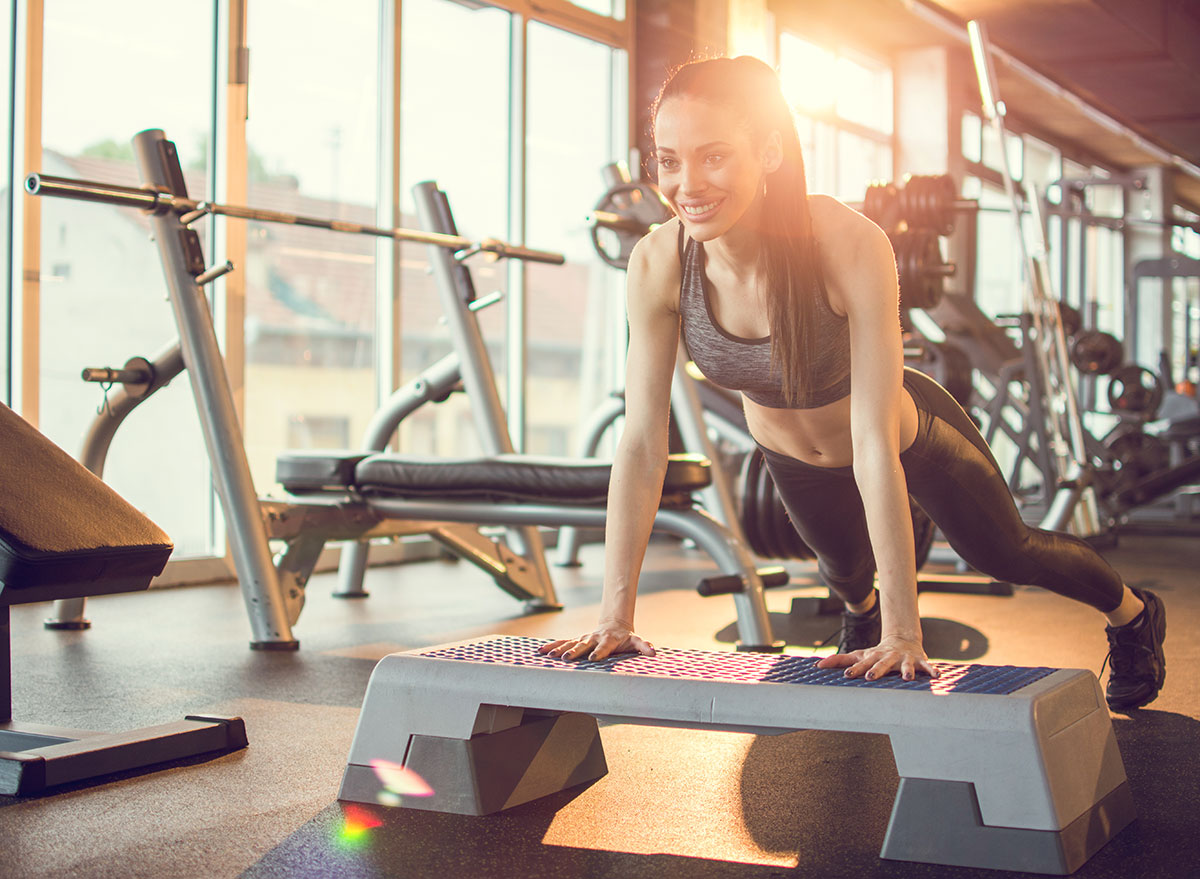
If the 1970s was the decade of jogging and Jazzercise, the 1980s was the decade of aerobics and leotards, the 1990s was the time we all tried Tae Bo, and the 2000s was the decade in which spinning and Zumba classes went mainstream, it’s safe to say that the 2010s represented the golden age of not only CrossFit but also high-intensity interval training (HIIT), or “really short workouts.”
After all, ever since Chris Jordan, director of exercise physiology at the Johnson & Johnson Human Performance Institute, created his groundbreaking “7-Minute Workout” in 2013—and published the science supporting this sort of ultra-short, ultra-intense training in the American College of Sports Medicine’s Health & Fitness Journal—there’s been something of an exercise arms race to see how short you can make a workout that still achieves results.
According to the latest science, the 2020s may indeed become the decade of the micro-short workout.
Recent research published in the journal Medicine & Science in Sports & Exercise offers some good news for people who may find the aforementioned 7-Minute Workout, The Standing 7-Minute Workout, the 5-Minute Full-Body Blast Workout, workouts that burn 200 calories in less than three minutes, and Martin Gibala’s famous One-Minute Workout simply too time-consuming. The study reveals that a four-second workout may significantly increase your cardiovascular fitness levels and increased muscle mass.
In fact, the findings of this study could have a profound effect on the health of older individuals who are past middle-age and wish to stay fit—and anyone who is living an overly sedentary lifestyle.
For the study, which was conducted by researchers at the Human Performance Laboratory at the University of Texas at Austin, both male and female participants in their 50s and 60s tried an exercise routine that required them to do four seconds of maximum effort on a Power Cycle (essentially, a stationary bike with a large flywheel that provides resistance), followed by either 15 or 30 seconds of rest between reps. (So, yes, the “Four-Second Workout” actually clocks in closer to 10 minutes.)
The key to the workout is to go all out in those four seconds. “Since the exercise is so powerful, your cardiovascular system is still stimulated during your rest periods,” Edward Coyle, Ph.D., head of UT’s Human Performance Laboratory, explained to Elemental. “You’re consuming a lot of oxygen, and you’re recovering the energy stores that you used during the sprints.”
The study concluded that the participants who trained this way over the course of eight weeks—using “true maximal power”—successfully “increase[d] muscle mass, power, as well as maximal cardiovascular capacity and functional tasks.”
Furthermore, the researchers found that doing this exercise had an impact on participants’ metabolic response. “The results suggest that breaking up sitting with frequent, intense and extremely abbreviated exercise ‘can undo’ some of the adverse effects of being sedentary,” writes The New York Times.
If you have access to a stationary bike that comes equipped with resistance, consider adding a variation of this workout to your routine. And if you’re interested in exploring a great HIIT workout yourself, read on, because we’ve included a stellar routine right here that you can do basically anywhere. For more great workout inspiration, don’t miss The One Workout That Drives 29 Percent More Fat Loss, According to Science.
Warm-up: Jumping Jacks (3 minutes)
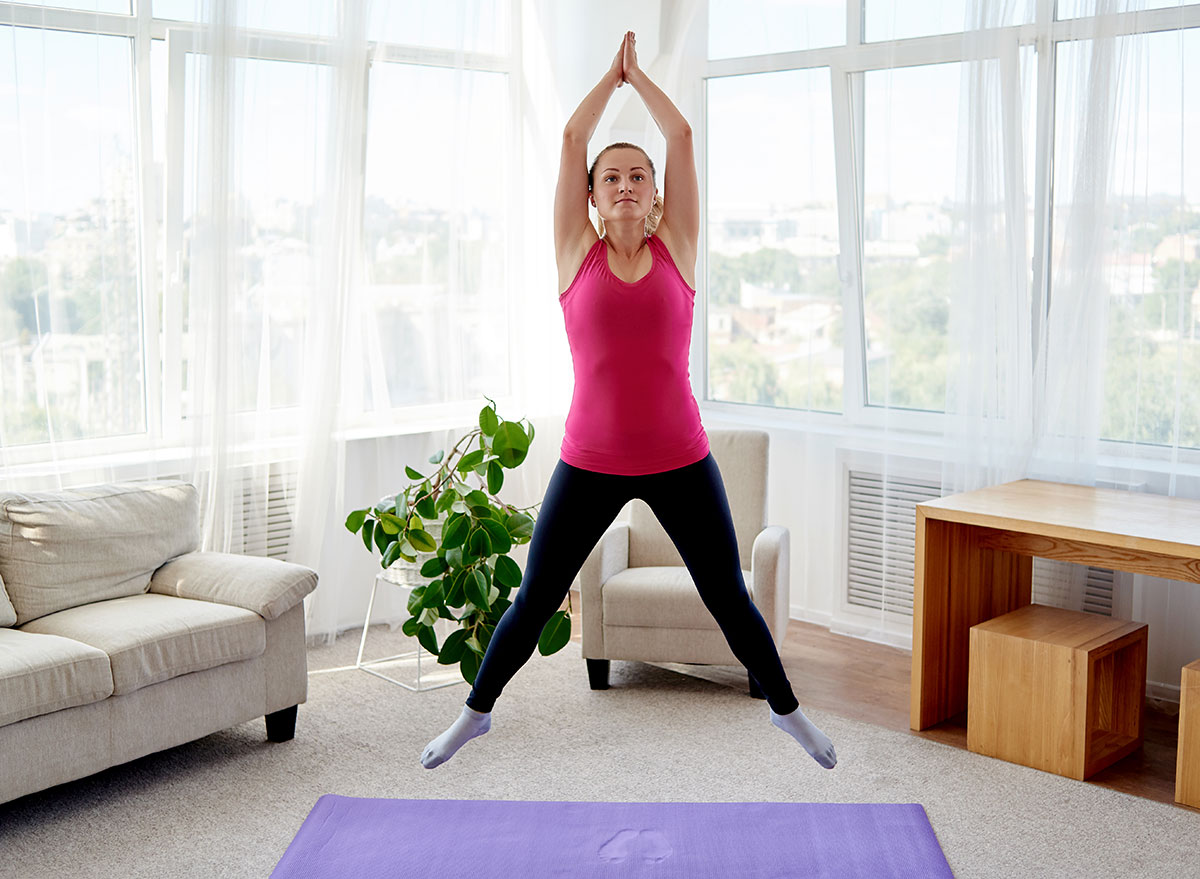
Stand with your feet slightly less than shoulder-width apart, hands at your sides. Jump into the air, spreading your feet as wide as you can while swinging your arms out to the sides and bringing your hands up over your head, palms facing forward. Immediately jump back up and return your hands and feet to the starting position. That’s one Jumping Jack. Repeat at a comfortable pace without stopping for the duration of your warm-up.
Run in Place (20 seconds)

Run in place, bringing your knees up as high as you can and pumping your legs as quickly as you can, for 20 seconds. Rest for 10 seconds.
Mountain Climbers (20 seconds)
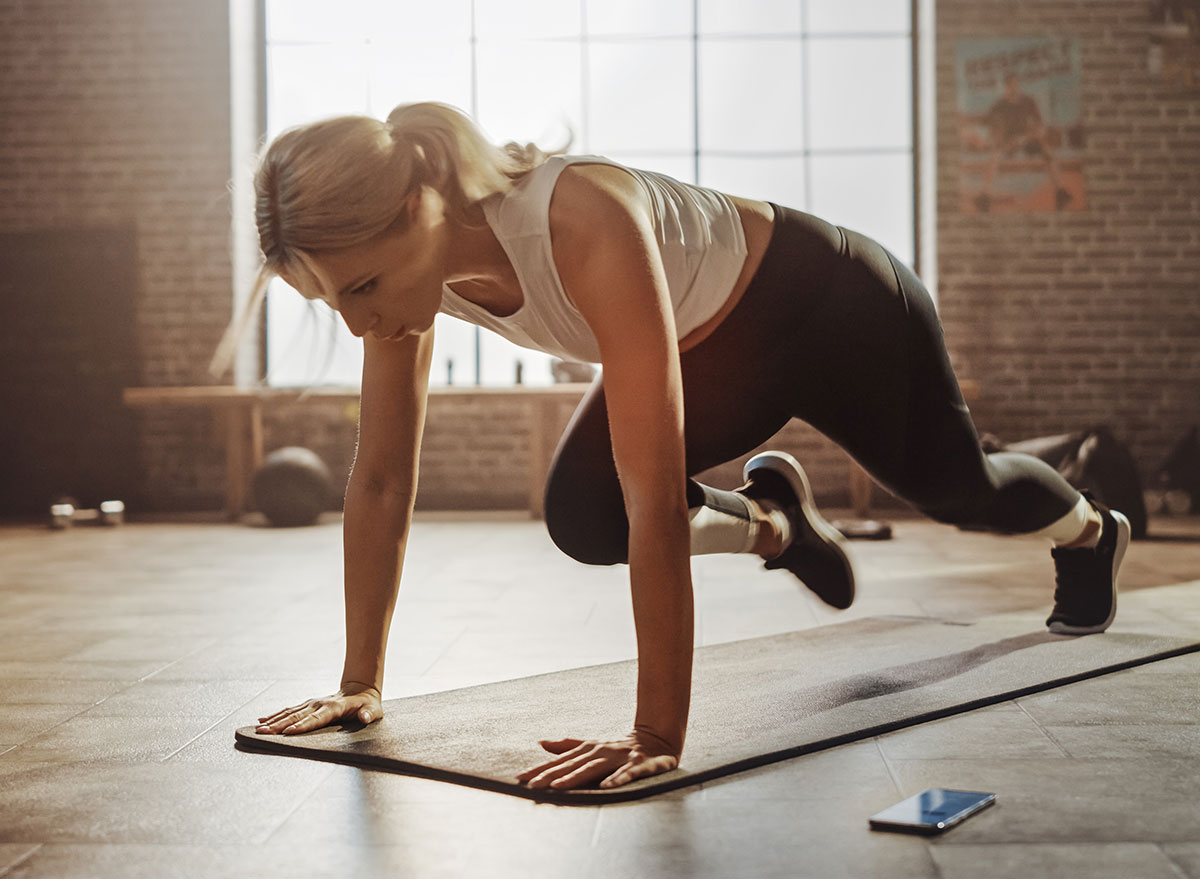
Get into a push-up position, with your arms straight. Raise your hips as you bring one knee up toward your chest, then quickly reverse leg position as you bring the other knee forward. The movement should be dynamic: rather than simply moving one leg followed by the other, get a rhythm going akin to jogging, where both feet are off the floor for a brief moment. Rest for 10 seconds.
Skater Jumps, side-to-side, mimicking a skater’s stride (20 seconds)
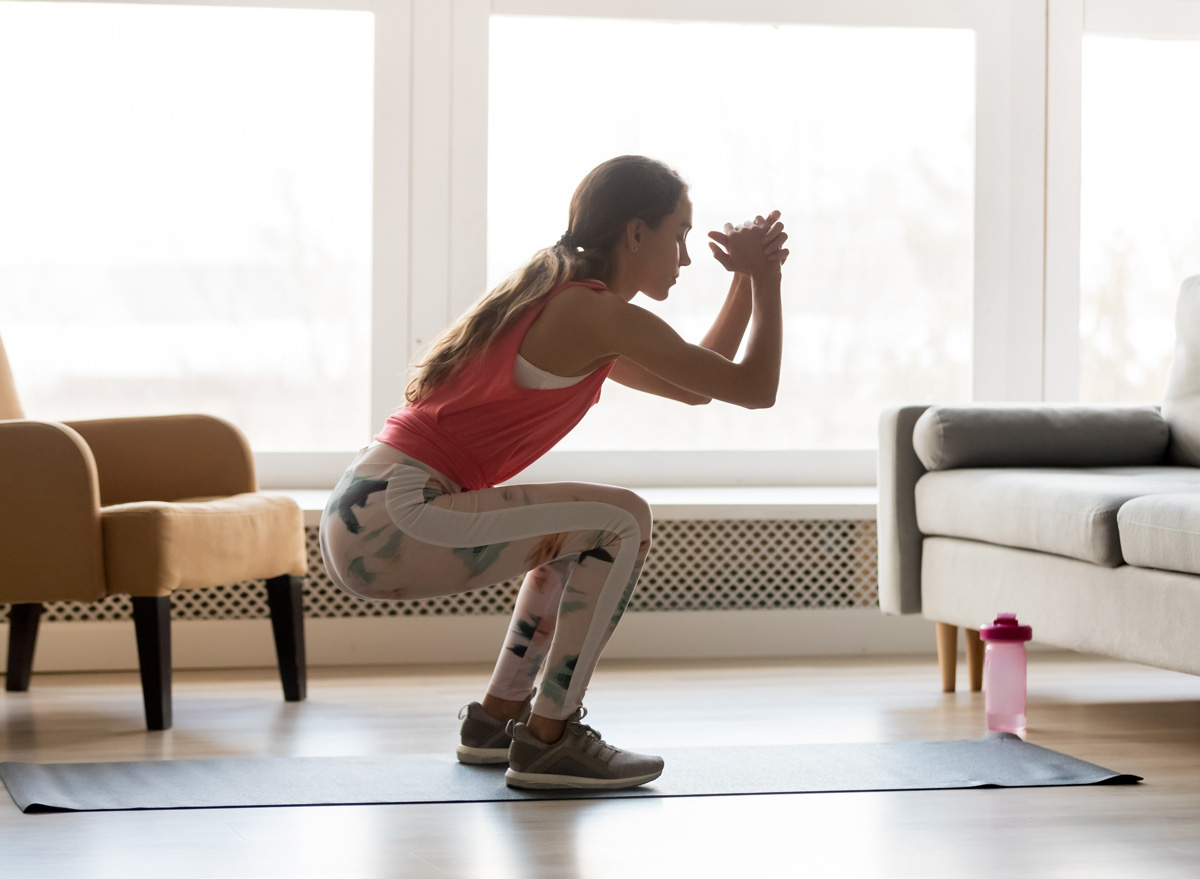
From a crouched position with your feet close together, take a sideways leap to your left, landing on your left foot, with your right foot sweeping behind it, your right arm sweeping in front of your midsection, and your left arm sweeping out to the side. Now, hop to your right, repeating the same form. This should be a smooth, comfortable motion that mimics the movement of a speed skater in action. Rest for 10 seconds.
Push-ups, with elbows close to sides of body (20 seconds)
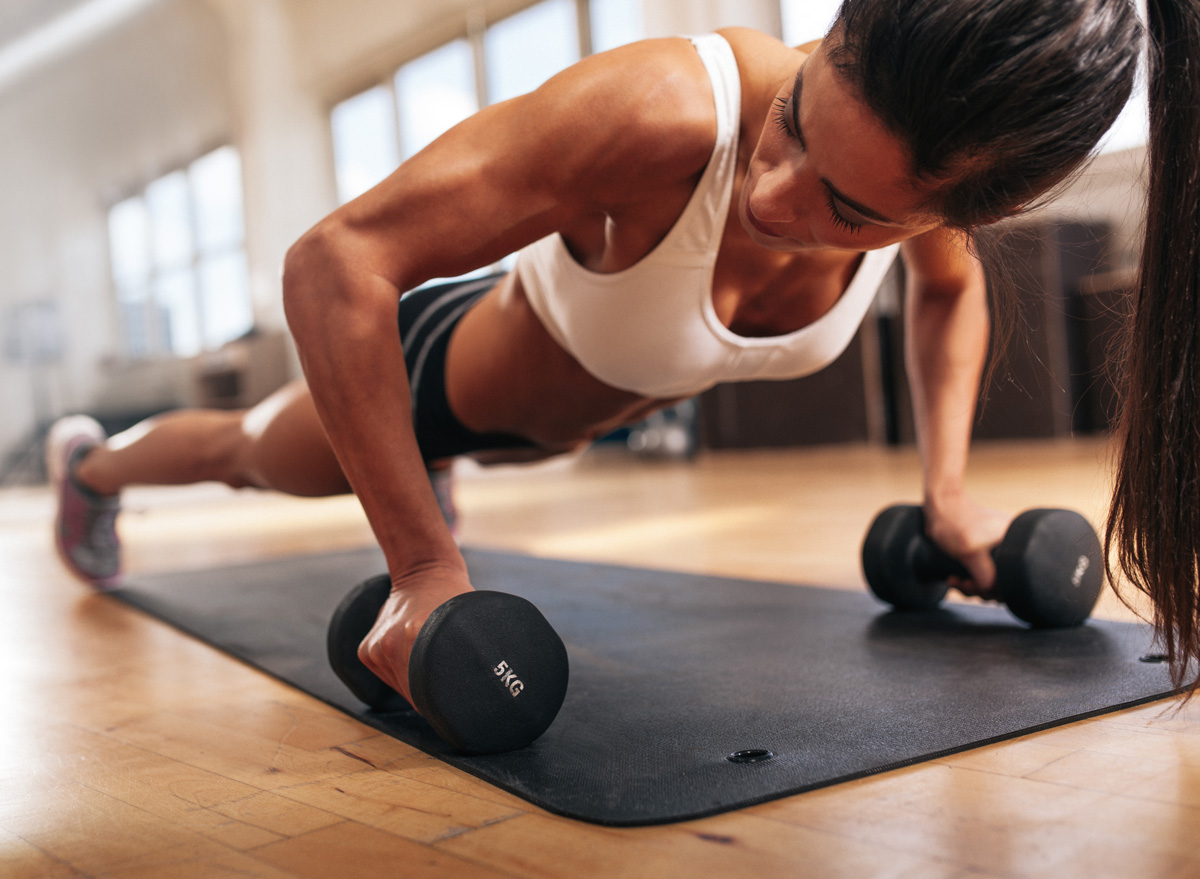
Lie on the floor facedown with your hands at your sides, just outside your shoulders, and your feet hip-width apart. Raise your hips, thighs, and chest so that your weight is supported by your palms and toes on the ground. This is the starting position. Exhale as you straighten your arms and push your body up until your arms are straight. Try to keep your head, hips, and ankles aligned as though your body is a straight plank. After a brief pause at the top, inhale as you lower yourself down. Do 10 repetitions. Rest for 10 seconds, then repeat the entire cycle.
Cool down (3 minutes)
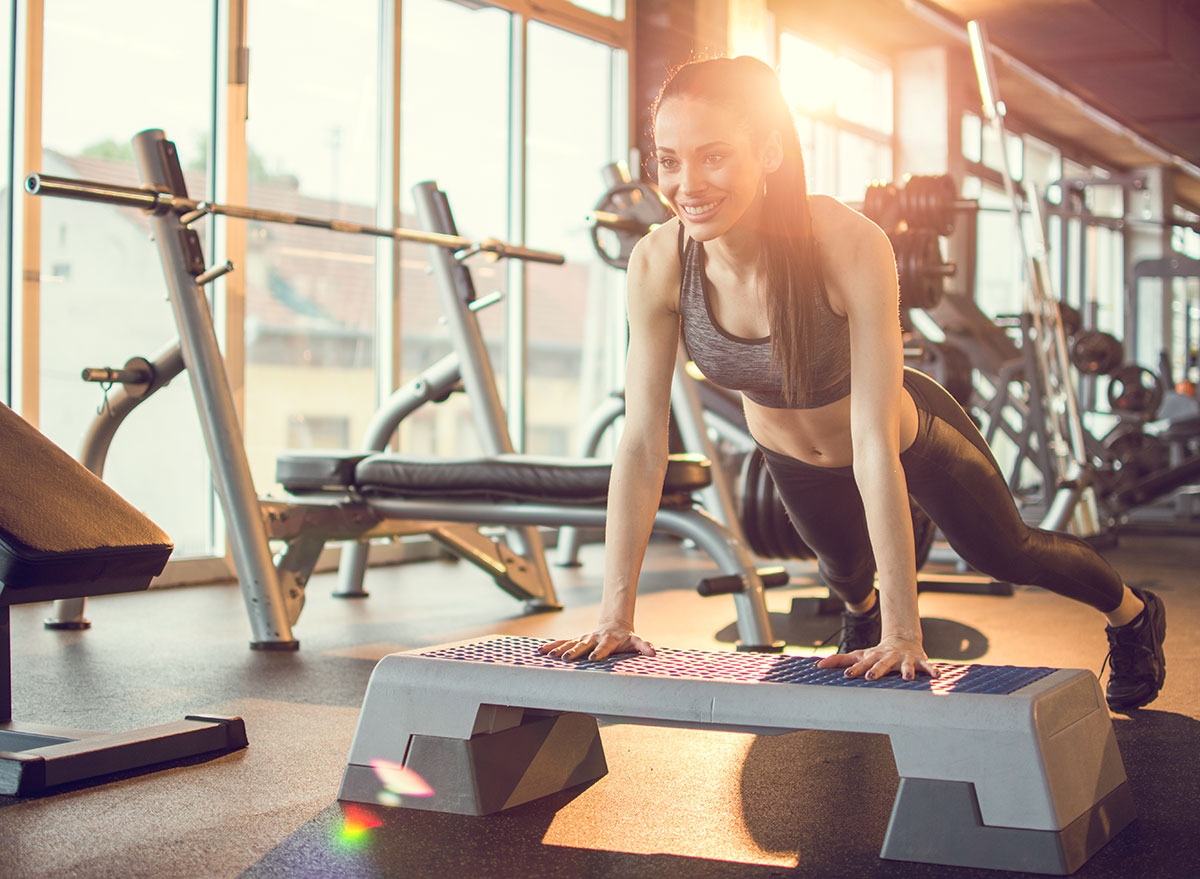
Cool down with any of the above warm-up movements. And for more ways to live healthier, consider trying one of these Sneaky Weight Loss Tricks That Actually Work, According to Experts.








